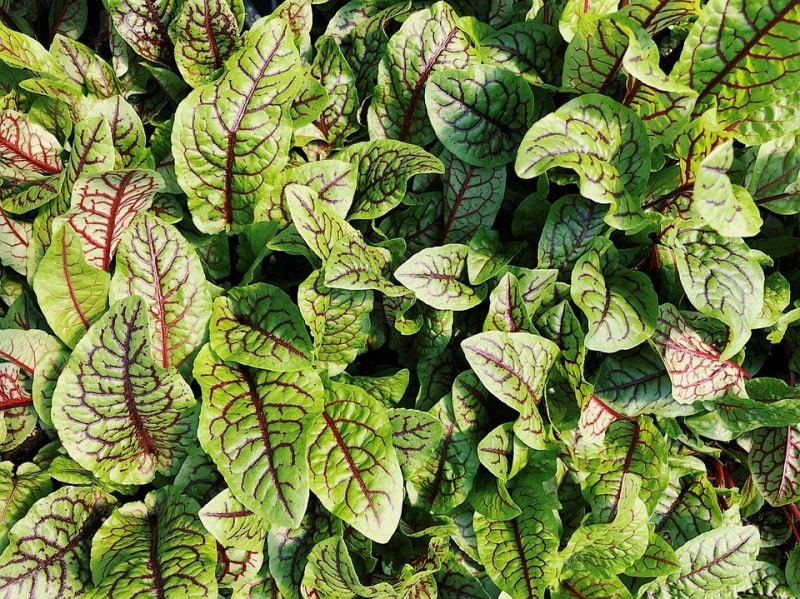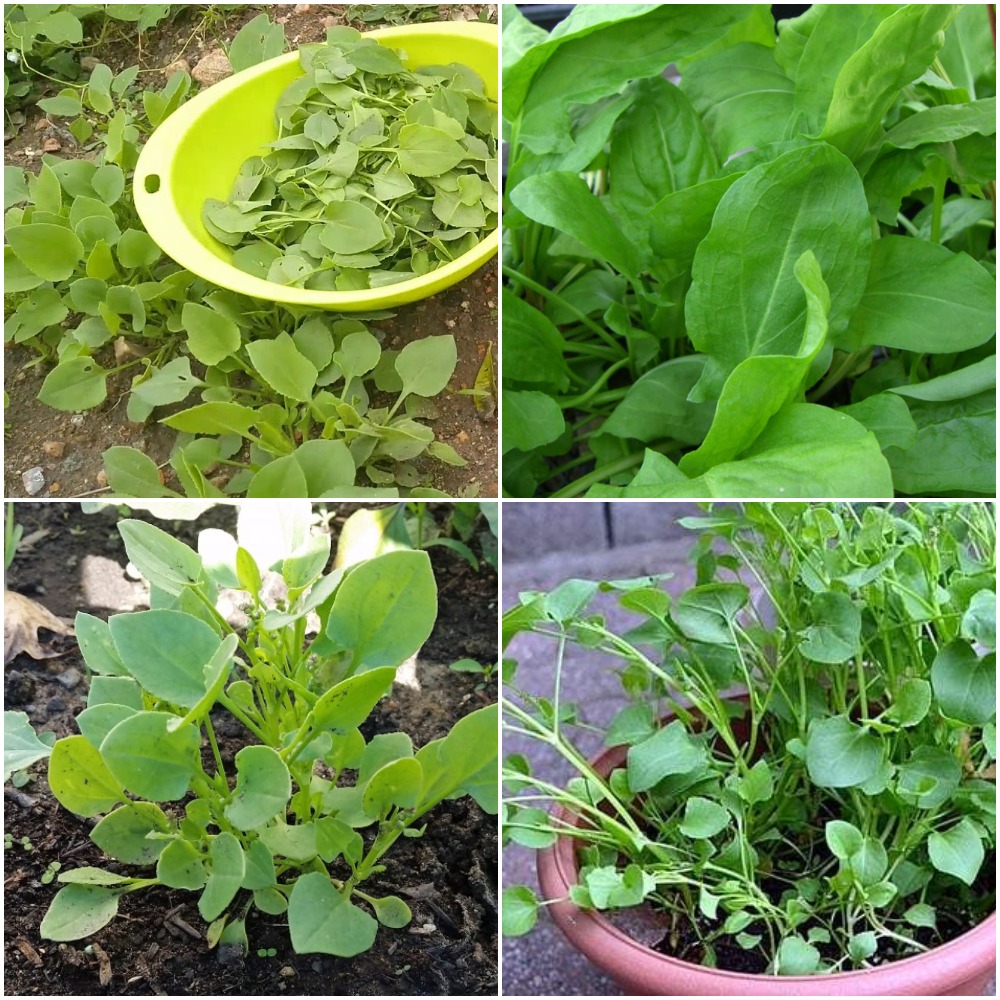Growing Chukka Kura; Garden Sorrel
Today, we learn the process of Growing Chukka Kura from seeds in pots, containers, on the terrace, and in balconies at home. Garden Sorrel is being called as Chukka Kura in Telugu, Khatta Palak in Hindi.
Introduction:
Sorrel is a plant which is just like lettuce whose leaves will look like an arrow. The taste of Sorrel is like a lemon and fresh which will help to complement salads and can also be made into a creamy soup. Once the establishment of Sorrel is done in your garden, it becomes hardy which will need a little amount of care along with weeding and watering. In a few climatic conditions, Sorrel will be grown as a perennial plant.
Sorrel varieties:
There are several varieties of Sorrel and they grow in different heights. Each type of Sorrel will have a flavor which is unique. Most of the nurseries which offer Sorrel will label them just as “Sorrel”, without giving a detail of the variety. It can also be called as “lemon sorel” because of its lemony flavor. But if you are given an option or if you are purchasing seeds rather than the plants which are established, you will have to check for the below types:
French Sorrel:
This is a Sorrel variety which will grow to a height of 8 to 12 inches. The leaves of this variety of Sorrel are mostly used in salads.
Garden Sorrel (Chukka Kura/Khatta Palak):
This is a Sorrel variety which will become very tall like up to 3-4 feet. This taste good when used in salads. Mostly grown in Indian backyards.
Common Sorrel:
This is a wild variety of Sorrel which can be consumed when the leaves of it are still young.
Blood Sorrel:
This variety of Sorrel will have leaves which are reddish in color and these can also be consumed when they are young. It can also be called a Red Sorrel plant.

You may be interested in How to Grow Basil from Cuttings, Seeds.
Requirements for Plantation of Garden Sorrel:
- Sorrel is the plant which will grow at its best when placed in full sun. So make sure that you are selecting an area of the plantation which will get a minimum of six hours of sunlight in a day. A site which has a partial amount of shade is good, but make sure that you are not planting the Sorrel in a shady place.
- If you are growing Sorrel in warm climatic conditions, Sorrel will be growing as a perennial once the establishment is done. Always remember that when you are selecting an area of plantation.
- Make sure that you are not planting Sorrel near any other vegetables which will grow very tall like tomatoes or beans. Strawberries are a good choice for companion planting with Sorrel.
Preparation of soil for growing Chukka Kura:
- The soil which is present in your area of plantation in order to ensure that it is suitable for your Sorrel. Sorrel requires a pH of 5.5 to 7. When you have selected a good patch, the soil has to be tilled to a depth of up to 6 inches. For enriching the soil and making it fertile, you can mix an organic compost.
- Sorrel will require soil which is well-drained. You can dig a hole and completely fill it with water for seeing how well the draining of soil takes place. If the water remains for some time before it gets drained, make sure that you are mixing more amount of organic compost and some amount of sand for helping it drain in a better way.
- You can also purchase a soil pH testing kit at any nursery present in your locality. It is a nice tool to have in your hand if you are a gardener.
- If you desire, you can start growing Sorrel in a pot which is filled with potting soil which is fertile. Always ensure that it is at a depth of at least 6 inches.
Plantation of Garden Sorrel:

- Sorrel is hard to frost and the plantation of it can be done several weeks prior to the last frost of that particular season. The garden bed has to be worked and the Sorrel seeds have to be planted in holes which are at a depth of 0.5 inches and are placed at a distance of 2 to 3 inches from each other.
- If the plantation of Sorrel is done in rows, let a space of 6 to 8 inches between each and every row. The planting bed should be watered well.
- You can start the seeds of Sorrel in the indoor locations if you wish to. The seeds have to be planted in the seed substrate. They have to be started in the early stages of spring so that the transplantation of seedlings can be done at the time of the last frost of the season.
- Now the seedlings have to be thinned. Once the seedlings sprout, you will have to thin them so that the seedlings which are strongest will be spaced at a distance of 6 inches from each other. This will give the seedlings a good chance for survival and will also help in the prevention of overcrowding.
- Sorrel will require a lot of water all across the growing season. The soil has to be tested to check if it requires water by touching the soil with your finger near the roots of the Sorrel. If you see that the soil is dry, you can water the Sorrel.
- The watering has to be done at the roots instead of sprinkling water on the leaves. This will help in the prevention of leaves from rotting and catching mold.
- Watering has to be done in the morning times when the sun has some time to make the plants dry prior to nightfall. If you are watering the plants too late in the day time, the Sorrel plants will be growing mold at night time.
- Sorrel beds are more susceptible to weeds. So be very careful all across the growing season. The weeds have to be pulled out starting from the roots so that they will not grow back again. Make sure that you are avoiding to use herbicide as it will create harm to the Sorrel in the same way as weeds.
- Aphids are one of the pests which will cause a threat to Sorrel. The best method to get rid of aphids is that you can simply pick them off the Sorrel leaves whenever you find them. For the soil which is matured, you can spray the aphids off by making use of a firm stream of water which is poured out using a hose.
- Male Sorrel plants will be producing flower spikes which will produce a large number of seeds. The spikes have to be monitored and removed before they get matured when the seed heads are green in color. If you are leaving the seed heads on the Sorrel plants, the seeds will get matured and they will fall and the plant will start reseeding.
- The flower heads can be removed by pinching them in a simple manner from the base by making use of your fingers.
- Sorrel will undergo bolting in the hot climatic conditions unless it is kept in shade.
- After one or two years, when the complete establishment of Sorrel plants takes place, you can divide them for the creation of more numbers of Sorrel plants. The plants have to be divided at the base, by creating a cut across the system of roots without causing any sort of damage. The new Sorrel plant has to be planted in a spot which is fertile and sunny and makes sure that you are watering it in a good manner.
You may also check the Growing Hyssop in the Home Garden.
Harvesting Garden Sorrel:
- The leaves of Sorrel have to be picked when they are at a height of 5 inches. The leaves of Sorrel will taste its best when they are still young. The flavor will become as bitter as they become older. The young leaves have to be picked off before they are becoming too large. The young will not only taste delicious but when you remove them, it will help the plant to grow in a vigorous manner.
- After you pick a leaf, a new leaf will grow in the old one’s place. You can continue harvesting Sorrel all across the season in the same way. Make sure that you are not forgetting to take off the flower spikes prior they get matured, as the plant will stop the growth of new leaves if the flower spikes are made to remain.
Using Sorrel:
Like all the other vegetables, Sorrel will be eaten at its best as soon as it is picked. It should be kept in the refrigerator for about 7 days if you can’t eat it immediately. Sorrel can also be made to dry or frozen, but if you process it, it will lose much of its flavor. You can start using the Sorrel in many ways in sauces, salads, sandwiches, etc.
Facts about Growing Chukka Kura:
- Garden Sorrel or common Sorrel which are normally called as Sorrel is a herb which is perennial. This belongs to the family of Polygonaceae. Sorrel is also called as a narrow-leaved dock or spinach dock.
- Sorrel is actually grown by dividing the roots. It can be grown from the seed which is sown in the garden prior to 15 to 20 days from the last date of frost at the time of spring. Sorrel can be harvested after 2 months of sowing.
- Sorrel can be grown in the indoor locations starting from seeds at the start of spring. After the establishment of the plants is done, one or two Sorrel plants will be growing into a patch which will produce sufficient Sorrel for most of the households.
- In order to collect the seeds of Sorrel, you will need to wait for the seed heads to get the plant dried. They have to be collected when they are dry and you will need to thresh them on a bowl in a careful manner. After that, the seed has to be separated from the chaff by the process of winnowing. The seeds have to be stored in a container which is sealed and has to be placed in a dry and cool place which does not get the sunlight directly. This makes it have the best life.
- You can eat the seeds of Sorrel. Even the flowers of Sorrel can also be consumed. But they have to be consumed fresh or they can even be boiled in soups. You can also dry them so that you can eat them later. You can ground the Sorrel seeds into a powder and mix it with ordinary powder. You can make use of Sorrel seeds in cooking, but they would taste bitter if not sliced and water is removed.
- The growing of Chukka Kura is very easy and simple just like spinach in your garden.
That’s all folks about Growing Chukka Kura in the home garden. Happy gardening!.
You may be interested to read Poplar Tree Plantation Profits.